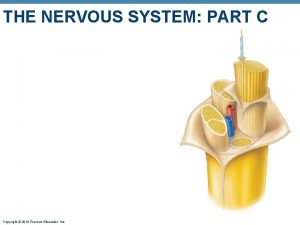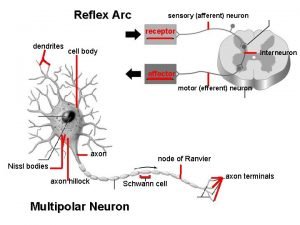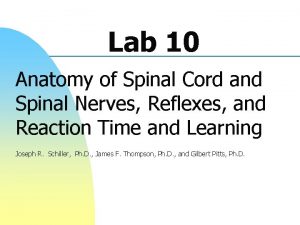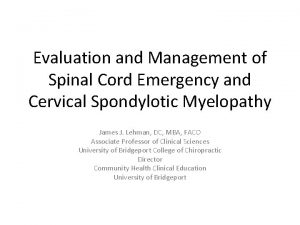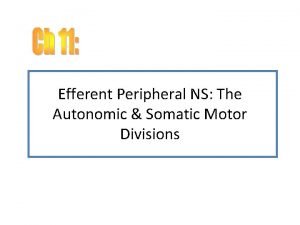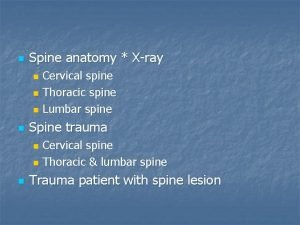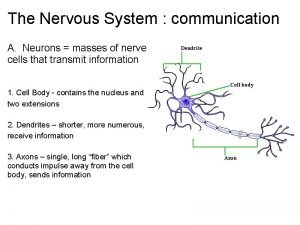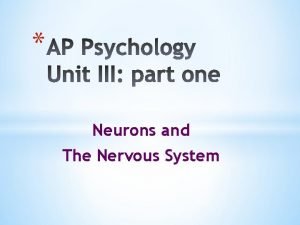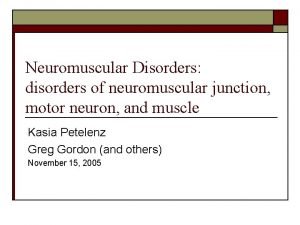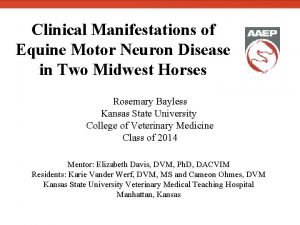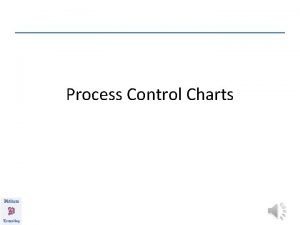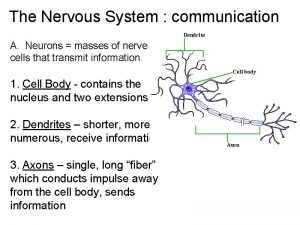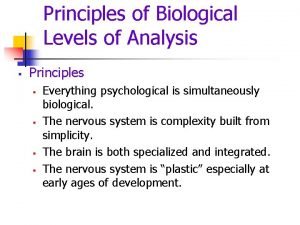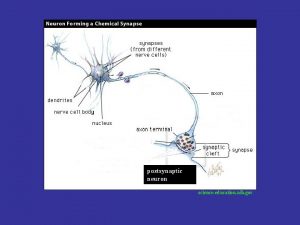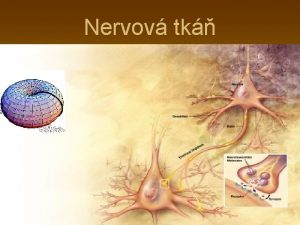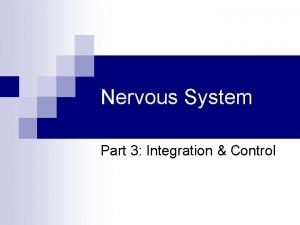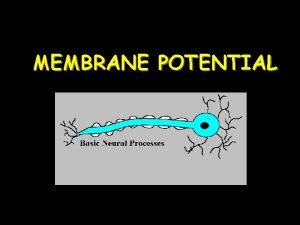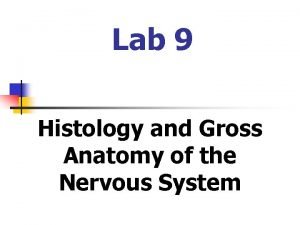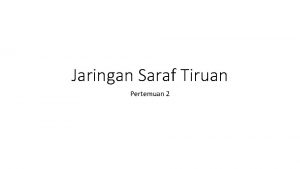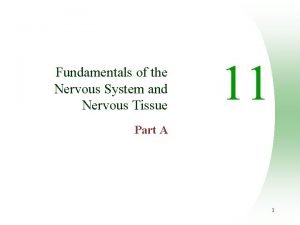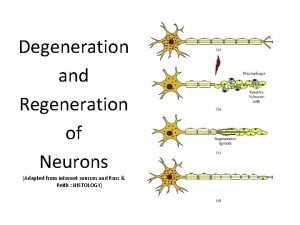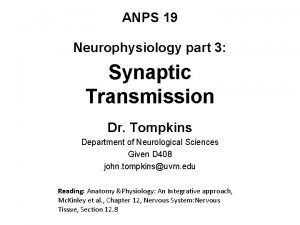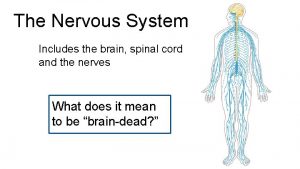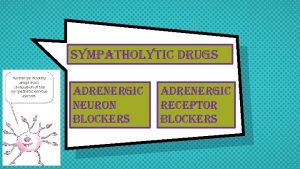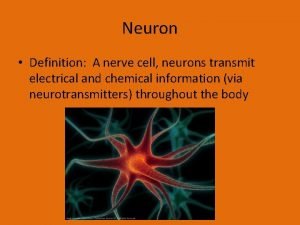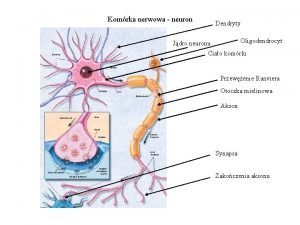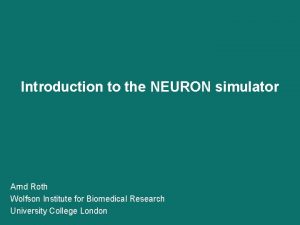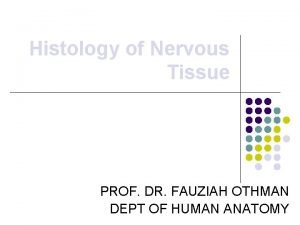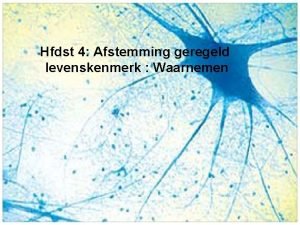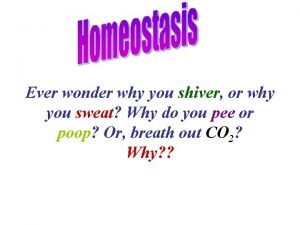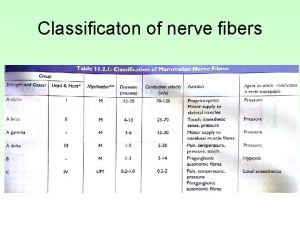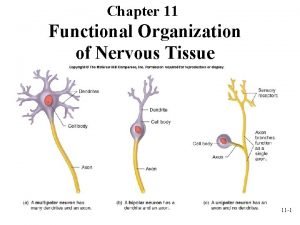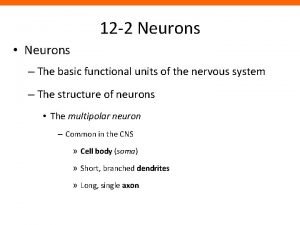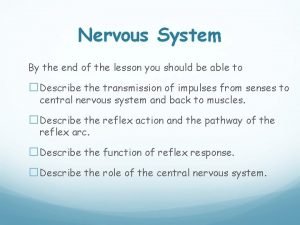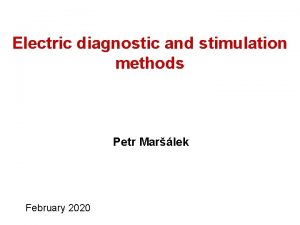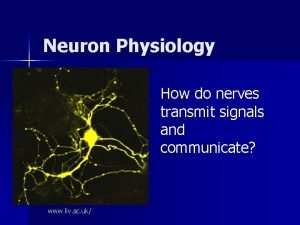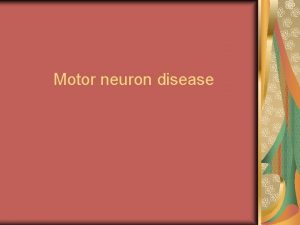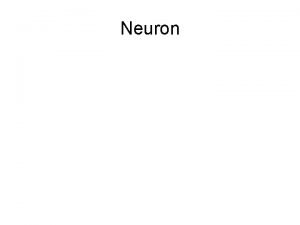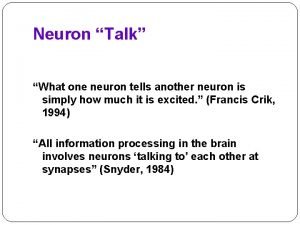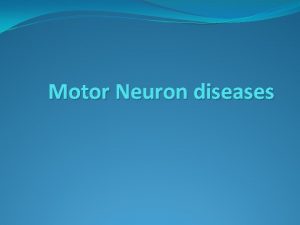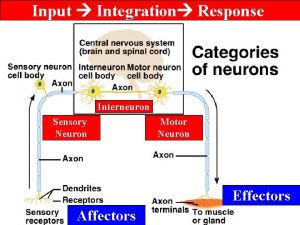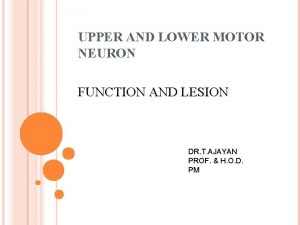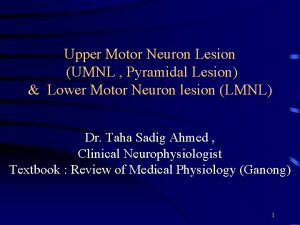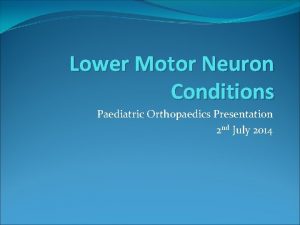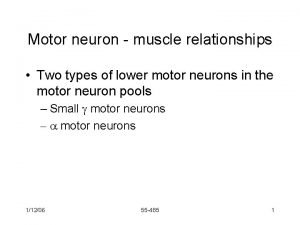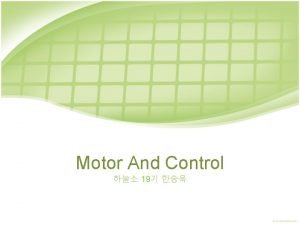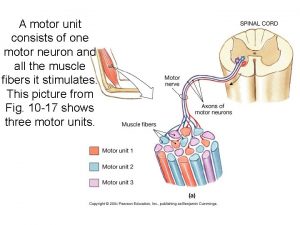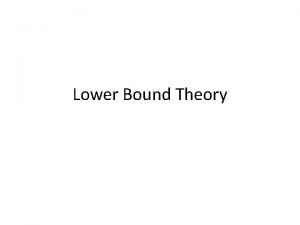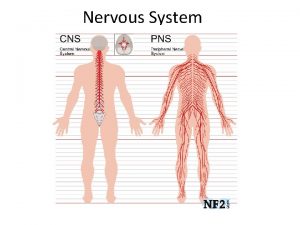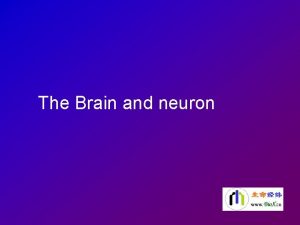Lower Motor Neuron Circuits and Motor Control I
























































- Slides: 56

Lower Motor Neuron Circuits and Motor Control I Motor Unit and Final Common Pathway


1. Motor Unit

• Every striated muscle has encapsulated muscle fibers scattered throughout the muscle called muscle spindles. • Extrafusal and intrafusal fibers

The extrafusal muscle fibers are innervated by Alpha motor neuron The intrafusal muscle fibers are innervated by Gamma motor neurons

Motor units l. A motor unit is a single motor neuron ( motor) and all (extrafusal) muscle fibers it innervates l Motor units are the physiological functional unit in muscle n. All cells in motor unit contract synchronously

Motor units and innervation ratio Innervation ratio Fibers per motor neuron Extraocular muscle 3: 1 Gastrocnemius 2000: 1 Purves Fig. 16. 4

• The muscle cells of a motor unit are not grouped, but are interspersed among cells from other motor units • The coordinated movement needs the activation of several motor units

organization of motor subsystems


Overview - organization of motor systems Motor Cortex Brain Stem Spinal Cord -motor neuron Final common pathway Skeletal muscle

Final common path - -motor neuron (-) (+) muscle fibers Transmitter? Schwann cells motor nerve fiber (-) (+) axon hillock Receptors acetylcholine esterase NM junction

Final Common Pathway, a motor pathway consisting of the motor neurons by which nerve impulses from many central sources pass to a muscle in the periphery.

II Motor Functions of the Spinal Cord – Spinal Reflex

Spinal Reflexes l Somatic reflexes mediated by the spinal cord are called spinal reflexes l These reflexes may occur without the involvement of higher brain centers l However, the brain can facilitate or inhibit them

1. Stretch Reflex

(1) Anatomy of Muscle Spindle l The muscle spindles detect change in the length of the muscle -- stretch receptors that report the stretching of the muscle to the spine. Each spindle consists of 310 intrafusal muscle fibers enclosed in a connective tissue capsule l These fibers are less than one quarter of the size of extrafusal muscle fibers (effector fibers) l

Anatomy of Muscle Spindle The central region of the intrafusal fibers which lack myofilaments are noncontractile, l serving as the receptive surface of the spindle (sensory receptor) l

Anatomy of Muscle Spindle Intrafusal fibers are wrapped by two types of afferent endings that send sensory inputs to the CNS l Primary sensory endings l – Type Ia fibers – Innervate the center of the spindle l Secondary sensory endings – Type II fibers – Associated with the ends of the spindle

Components of muscle spindle Dynamic intrafusal fiber Static intrafusal fibers Afferent axons Ia II } Primary ending Secondary } ending

Anatomy of Muscle Spindle l Primary sensory endings – Type Ia fibers l Stimulated by both the rate and amount of stretch

Anatomy of Muscle Spindle l Secondary sensory endings – Type II fibers l stimulated only by degree of stretch

Anatomy of Muscle Spindle The contractile region of the intrafusal muscle fibers are limited to their ends as only these areas contain actin and myosin filaments l These regions are innervated by gamma ( ) efferent fibers l

Muscle stretch reflex

(2) Muscle stretch reflex Definition: Whenever a muscle is stretched, excitation of the spindles causes reflexive contraction of the same muscle from which the signal originated and also of closely allied synergistic muscle. The basic circuit: Spindle Proprioceptor nerve fiber dorsal root of the spinal cord synapses with anterior motor neurons -motor N. F. the same M. from whence the M. spindle fiber originated.

Circuit of the Strength Reflex Muscle spindle Dorsal root Muscle fiber Tendon Ventral root -mn

The Stretch Reflex l Exciting a muscle spindle occurs in two ways – Applying a force that lengthens the entire muscle – Activating the motor neurons that stimulate the distal ends of the intrafusal fibers to contact, l thus stretching the mid-portion of the spindle (internal stretch)

The Stretch Reflex Whatever the stimulus, when the spindles are activated l their associated sensory neurons transmit impulses at a higher frequency to the spinal cord l


The Stretch Reflex l At spinal cord sensory neurons synapse directly (mono- synaptically) with the motor neurons which rapidly excite the extrafusal muscle fibers of stretched muscle

The Stretch Reflex l The reflexive muscle contraction that follows (an example of serial processing) resists further stretching of the muscle

The Stretch Reflex l Branches of the afferent fibers also synapse with interneurons that inhibit motor neurons controlling the antagonistic muscles

• Inhibition of the antagonistic muscles is called reciprocal inhibition • In essence, the stretch stimulus causes the antagonists to relax so that they cannot resist the shortening of the “stretched” muscle caused by the main reflex arc

The types of the Stretch Flex 1) Tendon reflex (dynamic stretch reflex) Caused by rapid stretch of the muscle, as knee-jerk reflex; Transmitted from the IA sensory ending of the M. S. Causes an instantaneous, strong reflexive contraction of the same muscle; Opposing sudden changes in length of the M. ; A monosynaptic pathway being over within 0. 7 ms;

The types of the Stretch Flex 2) Muscle tonus (static stretch reflex): Caused by a weaker and continues stretch of the muscle, Transmitted from the IA and II sensory ending of the M. S. Multiple synaptic pathway, continues for a prolonged period. Non-synchronized contraction, M. C. for at least many seconds or minutes, maintaining the posture of the body.

The Stretch Reflex l The stretch reflex is most important in large extensor muscles which sustain upright posture l Contractions of the postural muscles of the spine are almost continuously regulated by stretch reflexes

(3) Gamma impact on afferent response


Muscle spindle: motor innervation l Gamma motoneurons: – Innervate the poles of the fibers.

WHAT IS THE -LOOP? Descending influence (UMN) Muscle spindle 1 a Activation of the g-loop results in increased muscle tone MUSCLE



Functional significance of gamma impact on spindle activity l The tension of intrafusal fibers is maintained during active contraction by gamma activity. l The system is informed about very small changes in muscle length.


2. The Deep Tendon Reflex (1) Structure and Innervation of Golgi Organ

Golgi tendon organ: structure l l l Located in the muscle tendon junction. Connective tissue encapsulating collagen fibers and nerve endings. Attached to 10 -20 muscle fibers and several MUs. Ib afferent fiber. sensitive to tension


(2) Golgi tendon organ: response properties l Less frequent than muscle spindle.

Golgi tendon organ: response properties (cont) l Sensitive to the change of tension caused by the passive stretch or active contraction

(3) The Deep Tendon Reflex When muscle tension increases moderately during muscle contraction or passive stretching, l GTO receptors are activated and afferent impulses are transmitted to the spinal cord l


The Deep Tendon Reflex Upon reaching the spinal cord, information is sent to the cerebellum, where it is used to adjust muscle tension l Simultaneously, motor neurons in the spinal cord supplying the contracting muscle are inhibited antagonistic muscle are activated (activation) l

The Deep Tendon Reflex l Deep tendon reflexes cause muscle relaxation and lengthening in response to the muscle’s contraction l This effect is opposite of those elicited by stretch reflexes l Golgi tendon organs help ensure smooth onset and termination of muscle contraction l Particularly important in activities involving rapid switching between flexion and extension such as in running

Compare spindle and golgi

Compare spindle and golgi

3. The Crossed Extensor Reflex The reflex occur when you step on a sharp object l There is a rapid lifting of the affected foot (ipsilateral withdrawal reflex ), l while the contralateral response activates the extensor muscles of the opposite leg (contralateral extensor reflex) l support the weight shifted to it l
 Lower motor neuron lesion
Lower motor neuron lesion Lower motor neuron
Lower motor neuron Zapojenie alternatora
Zapojenie alternatora Motor neuron vs motor unit
Motor neuron vs motor unit Advantages of parallel circuits over series circuits
Advantages of parallel circuits over series circuits Spinal cord diagram
Spinal cord diagram Site of somatic motor neuron cell bodies
Site of somatic motor neuron cell bodies Internal capsule homunculus
Internal capsule homunculus Somatic motor neuron
Somatic motor neuron Site:slidetodoc.com
Site:slidetodoc.com Motor (efferent) division
Motor (efferent) division Ciliary ganglion
Ciliary ganglion Somatic motor neuron
Somatic motor neuron Autonomic nervous system muscles
Autonomic nervous system muscles Upper motor neuron
Upper motor neuron Postasthmatic
Postasthmatic Motor neuron adalah
Motor neuron adalah Motor neuron adalah
Motor neuron adalah Motor neuron
Motor neuron Equine motor neuron disease
Equine motor neuron disease Upper and lower control limit formula
Upper and lower control limit formula Neuron and neuroglial cells
Neuron and neuroglial cells All or none law of cardiac muscle
All or none law of cardiac muscle Postsynaptic neuron
Postsynaptic neuron Reflex arc
Reflex arc Nisslova tělíska
Nisslova tělíska Three basic parts of a neuron
Three basic parts of a neuron Resting potential of a neuron
Resting potential of a neuron Neuron type
Neuron type Buatlah model neuron mcp untuk menyatakan fungsi logika or
Buatlah model neuron mcp untuk menyatakan fungsi logika or Fundamentals of the nervous system and nervous tissue
Fundamentals of the nervous system and nervous tissue Neuronal pools
Neuronal pools Central chromatolysis
Central chromatolysis A neuron without terminal buttons would be unable to
A neuron without terminal buttons would be unable to Distribution of gated channels on a neuron
Distribution of gated channels on a neuron Refractory period neuron
Refractory period neuron Bipolar neuron function
Bipolar neuron function Bipolar neuron function
Bipolar neuron function Bipolar neuron function
Bipolar neuron function Adrenergic neuron blockers
Adrenergic neuron blockers Neuron definition
Neuron definition Neuron
Neuron Neuron yale tutorial
Neuron yale tutorial Neuron histology
Neuron histology Zenuwcel onderdelen
Zenuwcel onderdelen Neuron anatomy
Neuron anatomy Neuron fibers
Neuron fibers Function of multipolar neuron
Function of multipolar neuron Function of multipolar neuron
Function of multipolar neuron Which part of the neuron serves as the protective coating?
Which part of the neuron serves as the protective coating? Relay neuron
Relay neuron Halle berry
Halle berry Histology of cns ppt
Histology of cns ppt Qrs complex duration
Qrs complex duration What are the three basic functions of the nervous system
What are the three basic functions of the nervous system Mirror neuron
Mirror neuron Neuron physiology
Neuron physiology





